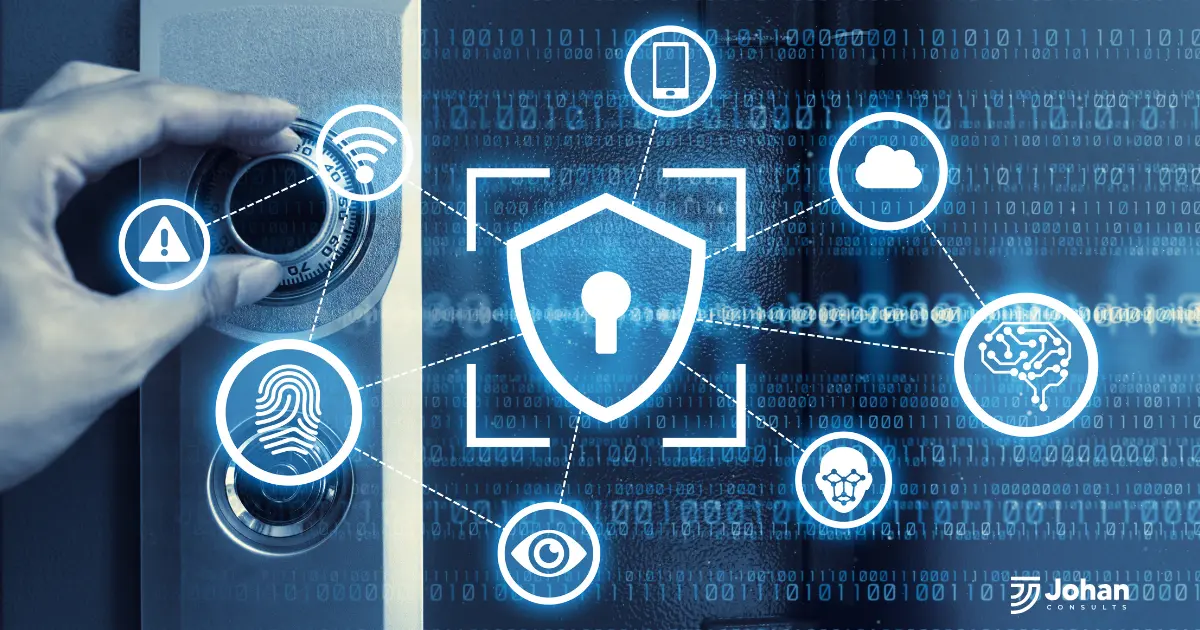Sure, everyone loves fintechs; they revolutionised the art of transaction-making. Fintech took the world away from the stuffy, brooding, ling-lined nature of traditional banking straight to the fast and easy era of mobile transactions.
While the collaboration between the financial and technology industries made life easy, it came with complications. For fintechs to function at all, they need data—large amounts of it.
Although other organisations use data, fintechs need the delicate ones. For every user that opens an account with them, they require sensitive data like BVN, credit card details, name, National Identification Number (NIN), etc.
This category of data attracts malicious actors, who in turn use them for crimes like identity theft, financial fraud, etc. This pushed fintech companies to implement cybersecurity systems to lock cybercriminals out and protect their data.
Regardless of how challenge-free it sounds, there are several fintech cybersecurity risks, and this blog reveals how to mitigate them.
An Overview of Top Fintech Cybersecurity Risks
The fintech industry is broad, encompassing B2B to B2C financial technology solutions.
Examples of these services include peer-to-peer payments, payment processing for e-commerce, investment platforms, and even consumer banking solutions.
According to statistica, fintechs rank no. 2 among the most attacked sectors just for the kind of data they collect. Now, these risks range from traditional technology exposures to more intense banking risks.
The statistics above are caused by a number of liabilities, which include third-party risks, insider threats, cyberattacks, and technology vulnerabilities.
Let’s take a closer look at these threats to fintech cybersecurity
Technology exposure
Day in, day out, we use technology one way or the other, and there’s no exception when it comes to using fintech solutions. When using fintech solutions, customers open themselves up to several technological vulnerabilities enhanced by the rapid growth of the internet.
Cybercriminals try out all entrances to get to data, including technological apps, cloud computing, mobile devices, and many others. To this end, financial establishments willing to partner with fintech solutions must be aware of the cyberthreats in store for them. It’s a matter of ‘when’ not ‘if’.
Data breaches

Fintech companies make good use of client’s data; they open accounts, keep records of each transaction, and authorize new ones, which sounds great. Besides these positive purposes, sensitive data functions for wrong reasons too. And that’s what cybercriminals push for.
While fintech companies need (are obliged) to use data for good reasons, malicious actors hold no such notion. These criminals perpetrate all kinds of evil like financial fraud, identity scams, targeted attacks, etc.
So, every fintech company must stay alert to prevent data breaches and consequences.
Money laundering
Yes, money laundering happens all the time, and with the emergence of cryptocurrency, it got easier. The untraceable nature of cryptos makes it doable; the person simply converts money into crypto and it’s all done.
Now, the problem occurs when such criminals launder money through fintech solutions. This puts the company in a terrible situation.
Phishing attacks
In 2023, nearly 9 million phishing attacks were discovered, and in the first quarter of 2024 only, there have been nearly 1 million occurrences.
Phishing attacks continue to be torn in the flesh of fintechs. This form of cyberattack leverages deception to make victims divulge confidential information for malicious reasons. It could be emails that carry links to scam websites or a fake text message requesting credit card details under the guise of the victim’s bank.
Fintech companies must stay alert of phishing attacks and find ways to reduce their occurrences.
Insider threats
On the flip side, while fintech employees are among the most cyberaware across several industries, they’re prone to mistakes. About 49% of fintech employees admit they work around security policies for work ease.
This puts the cybersecurity system in a precarious situation.
Regulatory compliance
To combat threats to personal data, countries and industries around the world established data protection regulations. These data protection laws, like the GDPR (general data protection regulation) and NDPA (nigerian data protection protection act), give data subjects (owners) more control over their data.
Also, these regulations place stringent rules over data protection and penalise non-compliant organizations. Now, the fintech industry’s bound to some of these regulations, like PCI-DSS and GDPR, among others.
So fintech companies work hard to meet up with their requirements, which do not come cheap.
API vulnerabilities
The fintech ecosystem uses Application Programming Interfaces (APIs) for data sharing and integration. However, they introduce vulnerabilities that cybercriminals exploit if not properly secured.
APIs make fintechs vulnerable by exposing data, having weak authentication, allowing injection attacks, lacking rate limiting, and depending on third-party APIs. These issues can lead to data theft, unauthorised access, and service disruptions.
Now, to the next part, how to reduce the impact of these risks to fintech cybersecurity
How To Mitigate Fintech Cybersecurity Risks
No organisation—fintech inclusive—can stand without risks to its cybersecurity system. But the key lies in mitigating them before they wreck havoc. Here are a few ways to reduce fintech cybersecurity risks.
1. Robust data security practices

Cybersecurity is all about securing data and devices in an organisation, and to do that effectively, fintechs must implement data security systems. Robust encryption measures such as end-to-end encryption and tokenisation make data unreadable even if it’s stolen
2. User Education
Most phishing attacks go for the users because they’re often ignorant about basic data protection and security measures. As a result, the user ends are often unprotected and vulnerable to cyberattacks.
A simple solution is to educate fintech users on how to spot and avoid phishing emails and messages.
3. Access control
To reduce the chances of unauthorised access to sensitive data, fintech companies should implement strict and intense access control methods. The best principle to follow is the “need to know” basis, where only employees who need data for their roles can access it.
4. Employee trainings
This is the best way to cross out insider threats on the ‘fintech cybersecurity risks” list. Since the staff contribute significantly to data breaches, it makes sense that the fintech conducts regularly sensitisation and trainings. This way, employees know the different types of cybersecurity and its importance in the fintech industry.
5. Capable network infrastructure
To better handle increased traffic and install real-time traffic monitoring systems, fintechs need to invest in robust network infrastructure. With such a system, they can detect and shutdown DDOS (Distributed Denial of Service) threats immediately.
Additionally, fintech companies should come up with a comprehensive incidence-response plan to reduce the impact of a DDOS attack.
6. Use secure API designs
Designing secure APIs with strong authentication methods like OAuth or API keys and keeping a close watch on API traffic are crucial to reducing API-related risks. Regular security checks and testing help find and fix weaknesses before they can be misused.
7. Ethical AI practices
To counterattack the AI-based cyberattacks, fintechs should conduct rigorous testing of their own AI models against potential attacks to identify and fortify their weaknesses. Additionally, these AI models should be checked regularly and updated when necessary to ensure functionality against newer modes of attacks.
Conclusion
Fintechs brought an unrivalled wave of comfortability to users around the world. While it’s a welcome development, fintech came with disadvantages in the form of data breaches.
Yes, there’s been efforts at cybersecurity; many issues pose fintech cybersecurity risks, and we’ve seen how we can mitigate them.
It is of utmost importance that fintech companies prioritise cybersecurity to prevent loss of trust, reputational damage, and regulatory fines that can cripple their growth.
Want to implement a regulatory-compliant cybersecurity system? Schedule a free consultation with our experts at Johan Consults.
We listen to your concerns, assess your entire cybersecurity system, and provide solutions to the identified problems. Contact us today for maximum regulatory compliance.











